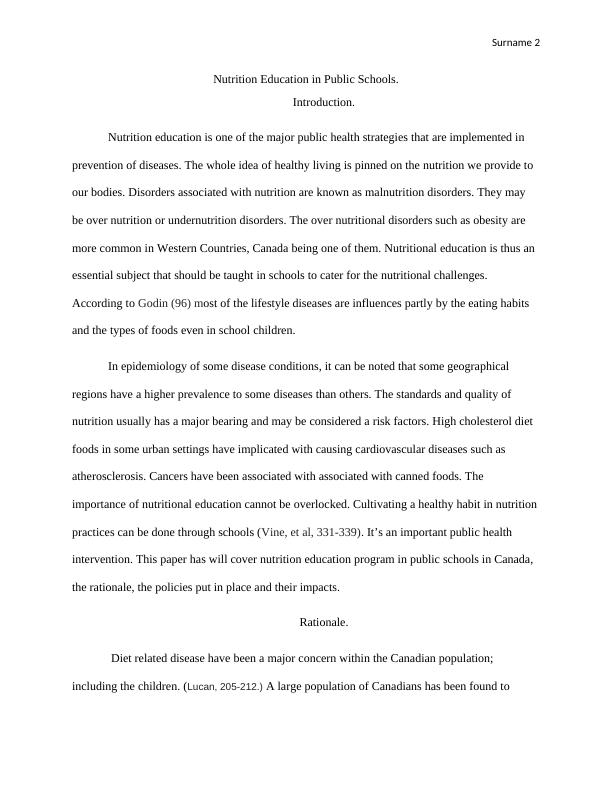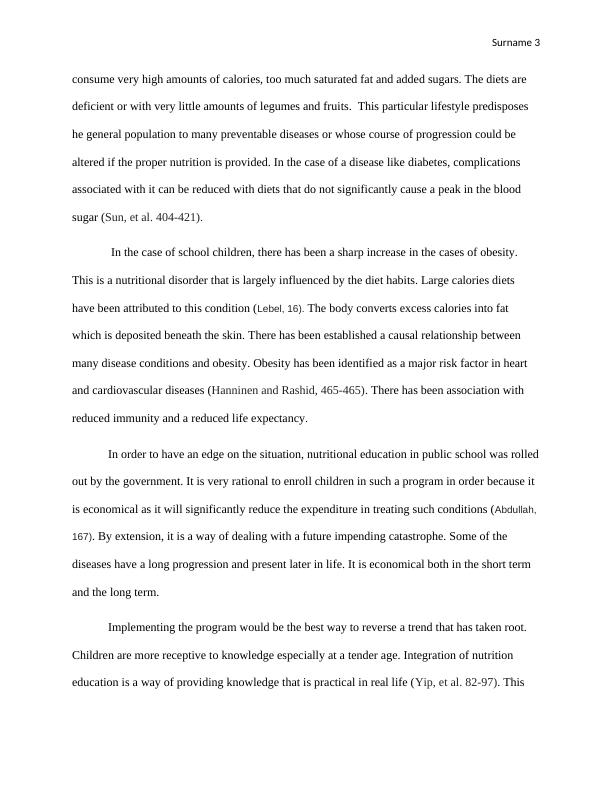Nutrition Education in Public Schools: Rationale, Policies, and Impacts
9 Pages2220 Words88 Views
Added on 2023-05-30
About This Document
This article discusses the importance of nutrition education in public schools in Canada, the policies put in place, and their impacts. It highlights the rationale behind the implementation of nutrition education programs, the policies formulated by some provincial schools, and their effectiveness. The article also explores the challenges faced in implementing these policies and concludes with a call for the improvement of the quality of foods available in schools.
Nutrition Education in Public Schools: Rationale, Policies, and Impacts
Added on 2023-05-30
ShareRelated Documents
End of preview
Want to access all the pages? Upload your documents or become a member.
Health Systems and Economics
|6
|1451
|100
Effect of Diet on Children's Health Assignment
|6
|1506
|48
Statement Principally, lifestyle disorders cause
|6
|1189
|187
Canada Food Guide and Public Health: Communication Objectives and Strategies
|4
|601
|409
Addressing Health Inequalities
|11
|1964
|27
Addressing Health Inequalities - Doc
|11
|1950
|259



